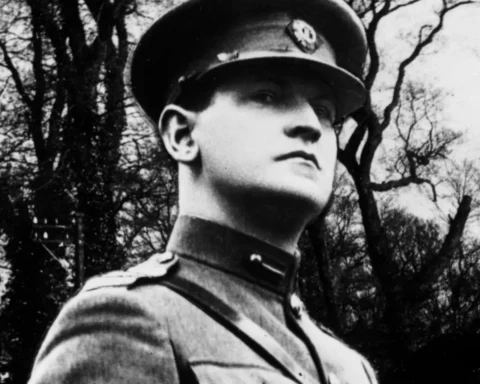- Sport seems to include several different meanings, be it physical activity, hobby, competition, teamwork, or conflict. One of the essences of doing a particular sport is having this feeling of participation in a game, where there is always a certain opponent against whom we need to prevail.
By participating in this competitive exercise, we feel like we fit into the society that surrounds us, shaping our sense of identity. Teams in various sports enhance rivalry among groups, creating an “us versus them” dynamic and fueling hatred based on differences between communities.

By that time, the number of attendees of sport-related events started to increase, especially if we take football as an example. Football has become one of the most spectacular types of sport, with its ever-growing fan base. Not only doing but watching the game became popular among the supporters, in this way there was a form of belonging present with the football team.
When we say football, the country that comes to mind is England because that is where the “Football Association was founded as well and formal competitions were set up” (Badžgoň, 2014, p. 5).
However, the behavior of the attendees during the matches has changed over the years, which is why I am trying to investigate the possible effects of historical and socio-cultural changes in England which could cause violence in spectator events.

Football in England
William FitzStephen documented football in 1170. This competitive game, known as soccer in English-speaking countries overseas, has been around for over 600 years. Moreover It has evolved to become the most popular team sport in the world and has firmly established itself as an indispensable part of local cultures.
There are hundreds of millions of people participating “in the game either as players, or in case of the great majority, that is fans/supporters (Badžgoň 2). It is not “only exciting,and captivating show for all classes of fans, but also generates high levels of frenzy and passion that can quickly turn into different types of football-related violence” (Badžgoň, 2014, p. 2).
Protecting the reputation
The game of football we know today has gone through various changes they were “warlike and the matches involved hundreds of players on each side.” (Badžgoň, 2014, p. 5). Later on, with the establishment of the railroad system, which extended the area and opportunities for football even more.
“young men from rival villages were involved in battles/matches that were often used as an opportunity to settle old feuds, arguments, and land disputes. Such matches served as a field for serving political quarrels.
Moreover, “a town’s well-being and reputation depended on the play of their football team” (Badžgoň, 2014, p. 5). The football pitch was a place where people could express their frustration and anxiety.
Let us look at what could be the causes of the distress in Britain from the 1960s to the 1980s.
The situation in Britain in the 1960s
This period was also called the ’Swinging Sixties’ because it was a “decade of rapid change. Blink for one second and you would have missed it. It was the period that finally allowed people the liberty and individuality people had fought for […]. The sixties began […] restricted, but by the end, people were full of hope and optimism for a better future.” (The 1960s, The Decade that Shook Britain, [APA] (n.d.).
After the Second World War, there was a certain post-war tension sweeping across Britain and although Britain did not have directly close links to the War in Vietnam, famous people, such as John Lennon brought British people’s attention to protest against the conflict with songs “like ‘Give Peace a Chance [thath] showed people the horrors […] of war […] [and encouraged them] to pursue peace and freedom […].
People began to challenge and question authority, something that would have been unheard of a decade ago.” (The 1960s, The Decade that Shook Britain, [APA] (n.d.) All of these could also influence the behavior shown on the football field, where people expressed their anger in different forms of violence.

The situation in Britain in the 1970s
In England during the ’70s, “the post-war economic boom ended. Prices of goods and raw materials also began to rise sharply and the exchange rate between the pound and other currencies was unstable. This caused problems with the ‘balance of payments:imports of goods were valued at more than the price paid for exports.” (Britain in the 1960s and 1970s, [APA], n.d.).
All these events resulted in social distress. However a certain need for letting the steam appeared because “basking in the sunshine of post-war affluence, and indifferent to the fact that our foreign competitors had not only caught up with … [Britain] – they were leaving … [it] behind” (“Why does the 1970s get painted as such a bad decade?”, 2012).
This turned into a type of unrest that became a national problem afterward, since riots, crime, and vandalism started to spread not only in streets but also in spectator events, such as in football matches as the
“once flourishing industrial centers have in the last only few decades had to deal with a substantial economic restructuring that primarily led to massive unemployment and also to the subsequent decline in population (Badžgoň, 2014, p. 20).
At the end of the decade, there was a change in terms of political views with the arrival of the new prime minister, Margaret Thatcher.
Violence in the 1980s
Everything else should be left to individuals, to exercise their own choices and take responsibility for their own lives” (“What is Thatcherism?”, 2013).
Although the idea was a revolutionary one, her trials “against inflation led to mass unemployment” (“What is Thatcherism?”, 2013) also resulted in a huge recession, affecting the lives of people.
This was the decade when the greatest disasters of spectator events happened, namely the Hillsborough and the Heysel Stadium disaster, in the former there were 766 injuries and in the latter thirty-nine people died.
These kinds of events have affected the socio-cultural element of fan culture or “fandom”. In conclusion, Changes in the political climate have brought about these effects, including the rise of violent supporter groups. (Gow & Rookwood, 2008, p. 73).
The situation after the 1980s
During the 1990s, the British economy started to grow. And although it was still in recession, the rate of unemployment decrease. However a form of, “openly aggressive behavior came to form an important part of the lifestyle … [especially] particular socio-economic classes went to football matches.
Moreover they found football grounds attractive and convenient venues for … fighting” (Badžgoň 8). Media gave extra popularization of these events. But finally, the segregation of opposing fans had been imposed. (Badžgoň 18)”
References
Badžgoň, F. (2014). Football hooliganism – the dark side of the beautiful game (unpublished Bachelor’s Diploma Thesis). Masaryk University Faculty of Arts, Brno, Czech Republic.
Britain in the 1960s and 1970s, ESOL Nexus. (n.d.). Retrieved from, https://esol.britishcouncil.org/content/learners/uk-life/life-uk-test/britain-1960s-and-1970s
Gow, P., & Rookwood, J. (2008). Doing it for the team examining the causes of contemporary English football hooliganism. Journal of Qualitative Research in Sports Studies, 2(1), 243.
The 1960s, The Decade that Shook Britain. (n.d.). Retrieved from https://www.historic-uk.com/CultureUK/The-1960s-The-Decade-that-Shook-Britain/
What is Thatcherism? (2013, April 10). Retrieved from https://www.bbc.com/news/uk-politics-22079683.
Why does the 1970s get painted as such a bad decade? (2012, April 16), BBC News. Retrieved from https://www.bbc.com/news/magazine-17703483











